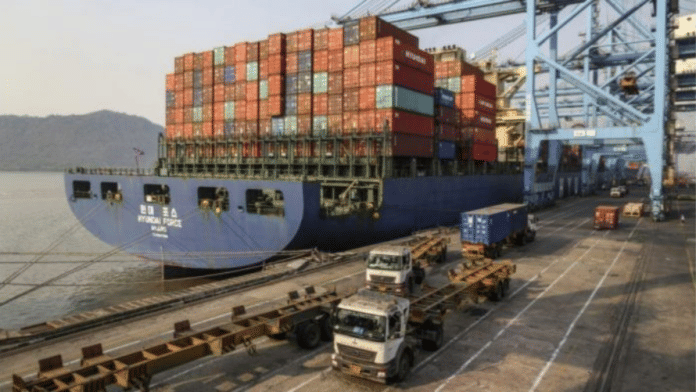Most items you pick up in a store – if they weren’t made or produced locally – at some point crossed the ocean in a container.
That’s because over 80% of global merchandise is transported via sea routes. The onus is on ports, therefore, to run as smoothly and efficiently as possible, which in today’s tumultuous world can be quite a challenge.
The Container Port Performance Index (CPPI), produced by the World Bank and S&P Global Market Intelligence, ranks 405 of the world’s container ports on their performance levels. And the latest index reveals some shifts in the maritime landscape.
There was no change at the top, with China’s Yangshan Port ranked the most efficient for the second year in a row, but East and Southeast Asian ports surged ahead in 2023, taking 13 of the top 20 spots. And despite its low ranking (367), Dar es Salaam Port in Tanzania cut ship arrival times by 57%.
Regional disruptions impacted port performance across the board, said the World Bank. And with shipping accounting for up to 3% of global greenhouse gas (GHG) emissions, the industry is looking to ensure efficiency improvements are also sustainable ones, with ‘green ports’ increasingly gaining traction.
“Container shipping continues to be an unpredictable and volatile sector,” said Martin Humphreys, Lead Transport Economist at the World Bank. “Major ports need to invest in resilience, new technology, and green infrastructure to ensure the stability of global markets and the sustainability of the shipping industry.”
What is a green port?
Ports are necessarily power-hungry places. Moving large containers on and off ships, which themselves need fuelling, requires significant injections of energy. Historically that’s been provided by fossil fuels.
Green ports “aim to minimize their ecological footprint”, says Port Technology International, through a variety of measures, including:
- Reducing air and water pollution
- Optimizing energy consumption, by embracing digitalization
- Using renewable energy sources, such as solar
- Promoting sustainable transportation, like electric vehicles
- Managing waste effectively.
While the CPPI ranks efficiency, rather than sustainability, there was evidence of some convergence of the two in this year’s index. Yokohama Port in Japan, ranked 9th, is developing facilities to store and use green methanol for its shipping fleet.
And even though Los Angeles and Rotterdam weren’t marked highly on the CPPI (375th and 91th respectively), they have been cited as examples of how ports can become more sustainable.
Decarbonizing shipping
More ports must follow suit – and urgently, say experts. Projections from the International Maritime Organization (IMO) have emissions from shipping increasing to 130% of 2008 figures by 2050, based on the current trajectory.
There is evidence the industry is “making strides to reduce emissions”, reports the World Economic Forum. Carriers have placed orders for over 200 dual-methanol vessels, it says, while ‘green corridors’ between ports are being established on some of the world’s busiest routes, according to C40.
In the UK, $42 million of government funding is being ploughed into developing green technologies for ports and ships. And the European Union is continuing its work with the IMO to reduce GHG emissions in the sector.
But as the Forum’s Fuelling the Future of Shipping points out, there are significant barriers to scaling zero-emission shipping that need to be addressed. The report highlights 10 key challenges, including underdeveloped infrastructure, insufficient willingness to “cover the green premium” and shipping’s transition having to compete against other sectors also trying to decarbonize.
Recognizing that such a list could seem daunting, the report points out that “these barriers need not all be overcome simultaneously”. The key thing, it says, is for stakeholders from across the value chain “to come together in innovative ways to isolate, share and eliminate the risks”.






